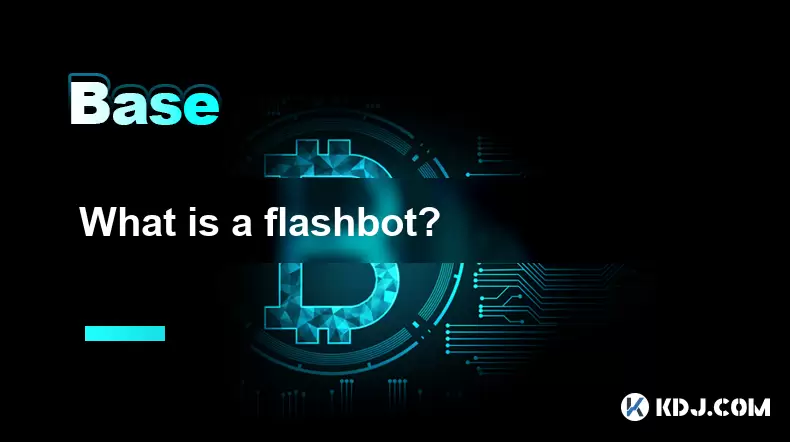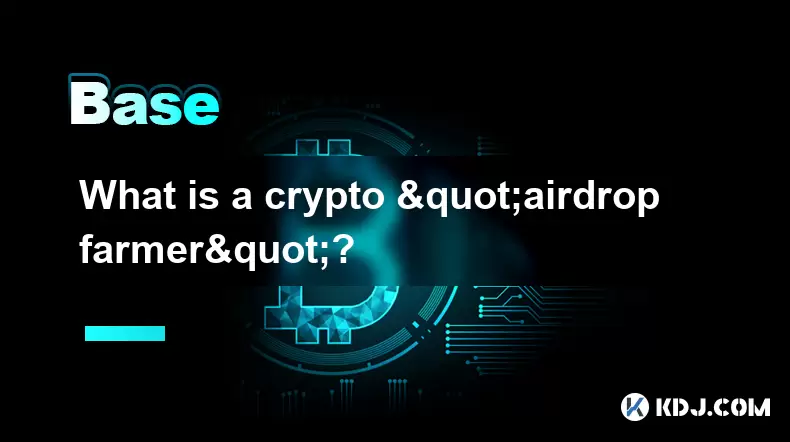-
 Bitcoin
Bitcoin $119300
1.07% -
 Ethereum
Ethereum $3730
3.87% -
 XRP
XRP $3.235
0.29% -
 Tether USDt
Tether USDt $1.000
0.00% -
 BNB
BNB $783.5
1.88% -
 Solana
Solana $188.7
0.25% -
 USDC
USDC $0.0000
-0.01% -
 Dogecoin
Dogecoin $0.2399
-0.44% -
 TRON
TRON $0.3157
2.37% -
 Cardano
Cardano $0.8254
1.94% -
 Hyperliquid
Hyperliquid $42.83
0.14% -
 Stellar
Stellar $0.4372
3.21% -
 Sui
Sui $3.859
4.91% -
 Chainlink
Chainlink $18.53
3.53% -
 Hedera
Hedera $0.2464
0.01% -
 Bitcoin Cash
Bitcoin Cash $519.8
2.46% -
 Avalanche
Avalanche $24.24
2.17% -
 Litecoin
Litecoin $113.7
0.73% -
 UNUS SED LEO
UNUS SED LEO $8.990
0.30% -
 Shiba Inu
Shiba Inu $0.00001390
0.21% -
 Toncoin
Toncoin $3.188
1.49% -
 Ethena USDe
Ethena USDe $1.001
0.02% -
 Polkadot
Polkadot $4.090
-0.91% -
 Uniswap
Uniswap $10.40
4.08% -
 Monero
Monero $326.6
3.12% -
 Bitget Token
Bitget Token $4.627
-0.42% -
 Pepe
Pepe $0.00001281
0.76% -
 Dai
Dai $1.000
0.01% -
 Aave
Aave $291.6
0.98% -
 Cronos
Cronos $0.1269
7.26%
What is a flashbot?
Flashbots streamline MEV extraction on Ethereum by enabling searchers to submit transaction bundles to validators via relays, enhancing efficiency and reducing network congestion.
Jul 22, 2025 at 11:07 am

Understanding Flashbots in the Cryptocurrency Ecosystem
Flashbots are a groundbreaking innovation in the blockchain and cryptocurrency space, particularly within Ethereum and other smart contract platforms. At its core, a flashbot is a type of searcher bot that participates in priority gas auctions (PGA) to extract maximum extractable value (MEV) from blockchain transactions. These bots operate in the background of the network, scanning for profitable opportunities in real-time and executing complex arbitrage or liquidation strategies.
The concept of MEV refers to the profit that can be made by reordering, inserting, or censoring transactions within a block. Flashbots were created to address the centralization risks and inefficiencies that come with MEV extraction. Before flashbots, miners or validators could exploit MEV privately, leading to front-running, sandwich attacks, and network congestion.
How Flashbots Operate
Flashbots work by creating a transparent and permissionless channel between searchers (the bots themselves), builders (entities that construct block templates), and validators (block proposers). This system allows for efficient MEV capture while reducing negative externalities on the network.
- Searchers identify profitable transaction bundles and submit them to a relay.
- Builders aggregate these bundles into full block templates.
- Validators choose which block template to propose based on the highest bid.
This process bypasses traditional public mempools, where transactions are visible to everyone and can be exploited by malicious actors. Flashbots aim to democratize MEV and reduce the harmful effects of transaction spamming and gas price wars.
Components of the Flashbot System
The Flashbot ecosystem is composed of several critical components that work in tandem to facilitate MEV extraction in a more efficient and fair manner.
- Flashbot Searcher: This is the bot that scans the blockchain for arbitrage or liquidation opportunities. It constructs a bundle of transactions that, when executed in sequence, yield a profit.
- Flashbot Relay: The relay acts as a secure and decentralized intermediary that forwards transaction bundles from searchers to builders.
- Flashbot Builder: Builders take the bundles and create full block templates. They compete to offer the most profitable block to validators.
- Validator Integration: Validators use a mechanism called MEV-Boost to integrate with Flashbot relays and choose the most profitable block without seeing its contents, preserving decentralization.
Each of these components plays a vital role in ensuring that MEV extraction is efficient, transparent, and competitive, while also protecting network users from harmful practices.
Use Cases and Examples of Flashbots in Action
Flashbots are primarily used in arbitrage trading, liquidations, and sandwich attacks, although their use is evolving with the ecosystem.
For example, a flashbot might detect a price discrepancy between two decentralized exchanges (DEXs), like Uniswap and SushiSwap. It would execute a buy order on the cheaper exchange and a sell order on the more expensive one, netting a profit in the process.
Another use case involves liquidation bots in DeFi lending platforms such as Aave or Compound. When a user's collateral position becomes undercollateralized, flashbots can quickly liquidate the position before others, capturing the liquidation bonus.
Sandwich attacks involve placing buy and sell transactions around a large pending transaction to profit from the price movement. Flashbots can detect such opportunities and execute the strategy in a single block.
Setting Up a Flashbot: A Step-by-Step Guide
Setting up a flashbot requires technical knowledge of Ethereum, smart contracts, and transaction bundling. Here’s a detailed walkthrough:
- Install Dependencies: Ensure you have Python, Node.js, and Web3.py or Ethers.js installed for interacting with the Ethereum blockchain.
- Access Flashbot SDK: Use the official Flashbot SDK available on GitHub to interact with the relay and submit bundles.
- Create a Private Key: Generate a wallet with ETH to pay for gas fees when submitting bundles.
- Connect to a Flashbot Relay: Use the Flashbot relay endpoint to send your transaction bundles directly to miners.
- Build Transaction Bundles: Write scripts that monitor the mempool and construct profitable transaction sequences.
- Submit and Monitor: Send your bundle via the SDK and monitor its inclusion in the blockchain.
Each step must be executed carefully to ensure that the bot operates efficiently and profitably.
Security and Ethical Considerations
While flashbots have introduced a more transparent and competitive MEV ecosystem, they also raise ethical and security concerns. Flashbots can still engage in front-running and sandwich attacks, which can be detrimental to regular users.
However, unlike traditional MEV extractors, flashbots operate in a permissionless and transparent environment, which reduces the risk of centralized manipulation. The Flashbot team has also advocated for research into MEV mitigation, including proposer-builder separation (PBS) and MEV smoothing.
Despite these efforts, developers and users should remain vigilant about the impact of MEV bots on transaction fairness and network congestion.
Frequently Asked Questions (FAQs)
Q: Can anyone run a flashbot?
Yes, anyone with the necessary technical knowledge and infrastructure can run a flashbot. However, it requires a deep understanding of Ethereum transactions, smart contracts, and MEV strategies.
Q: Do flashbots harm regular users?
Flashbots can negatively impact regular users through sandwich attacks and front-running, although they are generally considered less harmful than opaque MEV extraction methods used previously.
Q: Are flashbots legal?
Flashbots operate within the rules of the Ethereum protocol and are not illegal. However, their behavior can be ethically questionable, especially when they exploit transaction ordering for profit.
Q: How do flashbots differ from traditional bots?
Traditional bots operate in public mempools and often compete by increasing gas prices. Flashbots bypass public mempools and submit bundles directly to miners, reducing network congestion and improving efficiency.
Disclaimer:info@kdj.com
The information provided is not trading advice. kdj.com does not assume any responsibility for any investments made based on the information provided in this article. Cryptocurrencies are highly volatile and it is highly recommended that you invest with caution after thorough research!
If you believe that the content used on this website infringes your copyright, please contact us immediately (info@kdj.com) and we will delete it promptly.
- NFTs, Trademarks, and Judgments: A New York Minute on the Yuga Labs Case
- 2025-07-25 12:30:11
- Bitcoin, Nativo Resources, and Gold Operations: A New Era for Corporate Treasury
- 2025-07-25 12:50:11
- Bitcoin, Jim Cramer, and the US Deficit: A Wall Street Story
- 2025-07-25 10:30:11
- TGEs, Scalability & Privacy Tech: Decoding the Future of Blockchain
- 2025-07-25 10:30:11
- Crypto Payroll Revolution: How Stablecoins are Changing the Salary Game
- 2025-07-25 12:30:11
- Ben Askren, FUNKY Memecoin, and the Fallout: A New York Minute
- 2025-07-25 10:50:11
Related knowledge

What is the difference between CeFi and DeFi?
Jul 22,2025 at 12:28am
Understanding CeFi and DeFiIn the world of cryptocurrency, CeFi (Centralized Finance) and DeFi (Decentralized Finance) represent two distinct financia...

How to qualify for potential crypto airdrops?
Jul 23,2025 at 06:49am
Understanding What Crypto Airdrops AreCrypto airdrops refer to the distribution of free tokens or coins to a large number of wallet addresses, often u...

What is a crypto "airdrop farmer"?
Jul 24,2025 at 10:22pm
Understanding the Role of a Crypto 'Airdrop Farmer'A crypto 'airdrop farmer' refers to an individual who actively participates in cryptocurrency airdr...

What is the difference between a sidechain and a Layer 2?
Jul 20,2025 at 11:35pm
Understanding the Concept of SidechainsA sidechain is a separate blockchain that runs parallel to the main blockchain, typically the mainnet of a cryp...

What is the Inter-Blockchain Communication Protocol (IBC)?
Jul 19,2025 at 10:43am
Understanding the Inter-Blockchain Communication Protocol (IBC)The Inter-Blockchain Communication Protocol (IBC) is a cross-chain communication protoc...

How does sharding improve scalability?
Jul 20,2025 at 01:21am
Understanding Sharding in BlockchainSharding is a database partitioning technique that is increasingly being adopted in blockchain technology to enhan...

What is the difference between CeFi and DeFi?
Jul 22,2025 at 12:28am
Understanding CeFi and DeFiIn the world of cryptocurrency, CeFi (Centralized Finance) and DeFi (Decentralized Finance) represent two distinct financia...

How to qualify for potential crypto airdrops?
Jul 23,2025 at 06:49am
Understanding What Crypto Airdrops AreCrypto airdrops refer to the distribution of free tokens or coins to a large number of wallet addresses, often u...

What is a crypto "airdrop farmer"?
Jul 24,2025 at 10:22pm
Understanding the Role of a Crypto 'Airdrop Farmer'A crypto 'airdrop farmer' refers to an individual who actively participates in cryptocurrency airdr...

What is the difference between a sidechain and a Layer 2?
Jul 20,2025 at 11:35pm
Understanding the Concept of SidechainsA sidechain is a separate blockchain that runs parallel to the main blockchain, typically the mainnet of a cryp...

What is the Inter-Blockchain Communication Protocol (IBC)?
Jul 19,2025 at 10:43am
Understanding the Inter-Blockchain Communication Protocol (IBC)The Inter-Blockchain Communication Protocol (IBC) is a cross-chain communication protoc...

How does sharding improve scalability?
Jul 20,2025 at 01:21am
Understanding Sharding in BlockchainSharding is a database partitioning technique that is increasingly being adopted in blockchain technology to enhan...
See all articles

























































































